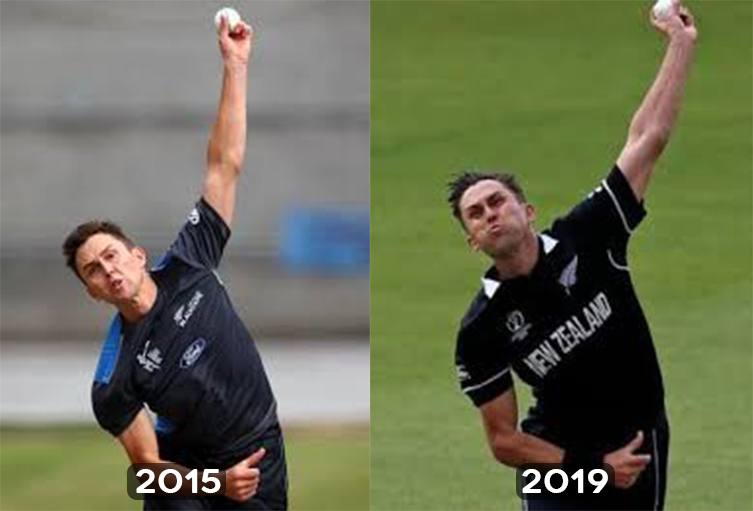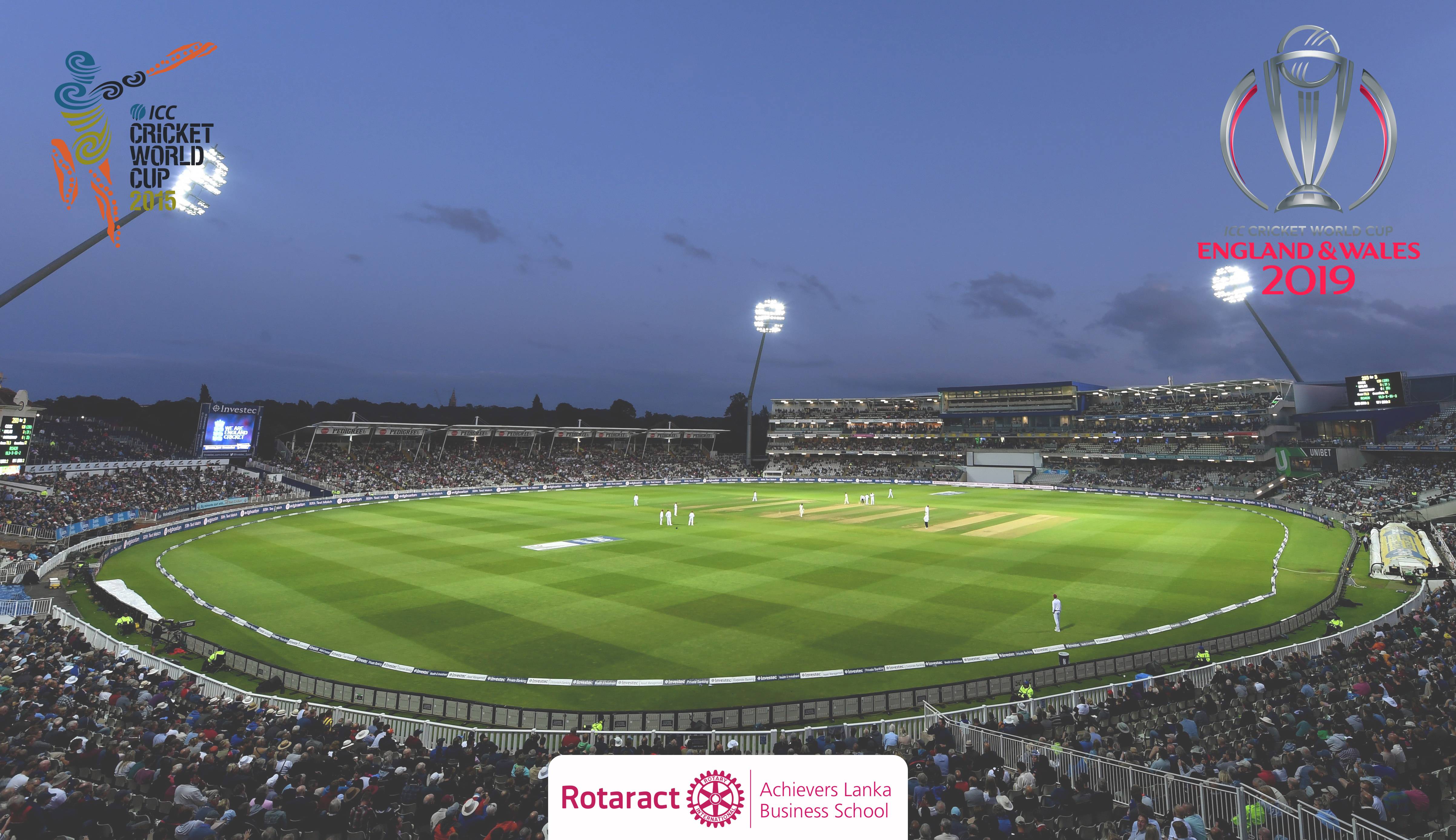I am sure that all of the cricket fans out there are suffering from a post-world cup hangover, just like me. So let us take a trip down memory lane and remember the past two ODI world cups and try to get some insight into how the one day game has changed between the two global tournaments. A little piece of advice to all those who hate statistics, you might not want to read beyond this point.

Prior to the start of the 2019 world cup, there were fears that the world cup would be dominated by batsmen and that bowlers would have a miserable time. This was based on the batting-friendly pitches and the puzzling lack of new ball swing after the 2015 world cup. Even though these fears didn’t come to pass and fast bowlers had a mighty good time I still think that the lack of swing is a problem that persists and it’s this facet of the game that I will be spending my attention on. For the purpose of this exercise, I will be analyzing and comparing two of the star performers of both world cups, Mitchell Starc of Australia and Trent Boult of New Zealand.

2015 World Cup Statistics:
| Mitchell Starc | Trent Boult | |
| Overs | 63.5 | 85.0 |
| Runs | 224 | 371 |
| Wickets | 22 | 22 |
| Average | 10.18 | 16.86 |
| Strike rate | 17.4 | 23.1 |
| Economy | 3.50 | 4.36 |
When you think about Starc’s and Boult’s performances in the 2015 world cup the first thing that comes to mind is the lethal late swing they constantly got, especially in Australia vs New Zealand all-time classic at Eden Park where both of them produced masterclasses in the art of swing bowling. This is borne out statistically in their performances in the first 10 overs of the game where the ball would be brand new and most conducive to swing. Starc bowled 30 overs in that phase taking 8 wickets at an average of 13.75 and a strike rate of 22.5 while Boult took a majority of his wickets in the first 10 overs, taking 13 wickets in 43 overs at an average of 12.69 and strike rate of 19.8(Remember this statistic, which will turn up later). This shows how effective both of these bowlers were in the first powerplay mainly due to the late swing they managed to get on a regular basis.

Another fascinating aspect that came up was how underrated Boult’s performance was during the tournament. Even though a cursory look would seem to say that Starc had a superior tournament there is a compelling argument that Boult was at least at par or even more impactful than Starc. When looking at the quality of the batsmen both bowlers dismissed, Starc’s victims had a mean career batting average of 23.6 at the time while the corresponding figure for Boult is 31.6 implying that Boult dismissed a higher caliber of batsmen. This is further borne out when taking into account the number of top-order batsmen dismissed by each bowler(batsmen in the top 4) with Starc taking 8 wickets of top 4 batsmen with Boult taking an astounding 16. Meanwhile, Starc was an unstoppable force against lower-order batsmen(8 and below) taking 10 wickets at the mind-boggling average of 3.9 with a wicket every 9.2 deliveries while New Zealand’s tactics meant that Boult rarely had such an opportunity. It was also amazing to see how hard it was for new batsmen to face both bowlers with Starc dismissing 18 batsmen for scores less than 20, with 10 ducks while Boult had numbers of 19 and 6. This is no way meant to diminish Starc’s remarkable achievements but merely point illustrate effective Boult was as well.

2019 world cup statistics:
| Mitchell Starc | Trent Boult | |
| Overs | 92.5 | 99.0 |
| Runs | 502 | 479 |
| Wickets | 27 | 17 |
| Average | 18.59 | 28.17 |
| Strike rate | 20.5 | 34.9 |
| Economy | 5.43 | 4.83 |
In the 2019 ODI world cup, Mitchell Starc achieved a world cup record for most wickets in a single edition while Trent Boult was also an impact player for the eventual runners up dismissing a host of world-class batsmen including De Kock, Root, Buttler, Finch and crucially Kohli in the semifinal. However, both Starc’s and Boult’s overall figures are somewhat inferior to the previous edition and it’s here where the role of swing or the absence of it comes into play. As mentioned before both Boult and Starc were phenomenal in the first powerplay in 2015, but 2019 paints an entirely different picture. Starc only took 4 wickets in 30 power play overs at an average of 40 and strike rate of 45 while Boult took 6 in 49 at an average of 35 and strike rate of 49, both subpar for such quality bowlers. This is a direct consequence of the absence of new-ball swing and it’s something that both the ICC and Kookaburra, the official ODI ball manufacturers should look into.

But as Bear Grylls said, “Adapt, Improvise, Overcome,” and these two bowlers showed their quality by finding alternative means of success. Starc became a middle overs monster, almost always stepping up when a partnership needed breaking which is well illustrated by the fact that he broke 6 50+ partnerships and 9 batsmen with 30+ scores as opposed to none and one respectively in 2015. He also remained his ruthless self in the death overs picking up 11 wickets at a measly economy of 4.96 in the last 10 overs and against lower-order batsmen with 8 scalps at an average of 4.6. Meanwhile, Boult became a much more potent middle overs and death bowler, picking up 6 wickets including a hat trick against Australia, in a role in which he wasn’t required in 2015. Keen observers might also have noticed a slight change in his action making it more round arm in an attempt to compensate for the lack of swing by getting some lateral movement off the pitch.


For all those who stuck around until this point, congratulations! I hope this blog gave some understanding as to how the game has evolved as per swing with the new ball in the past 4 years and hope you also got some insight into how two of the best bowlers around operated.
Rtr. Rahul Jeyanthan
